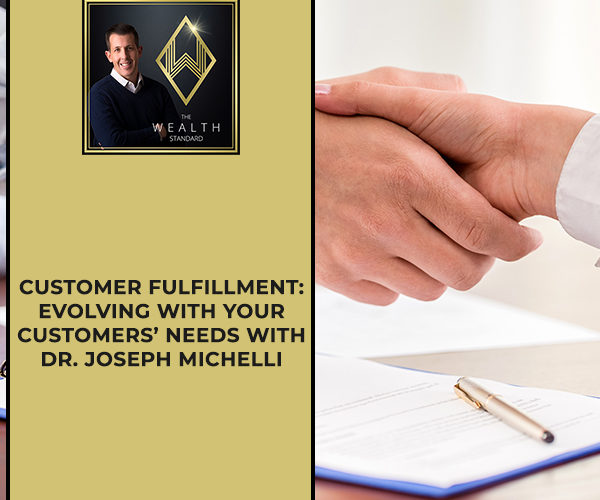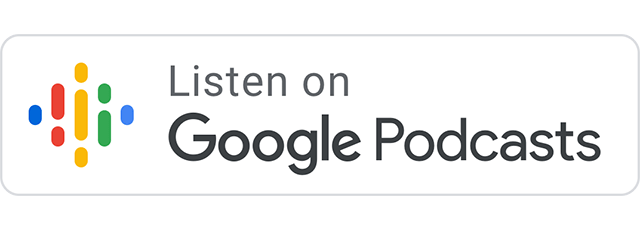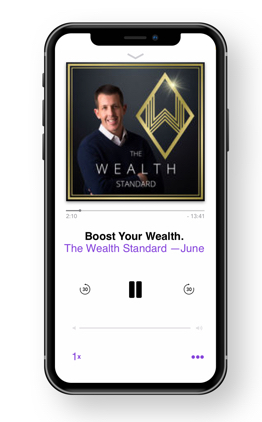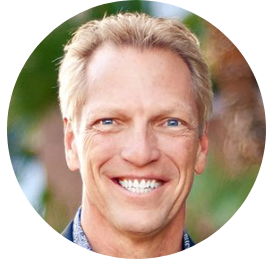Customer Fulfillment: Evolving With Your Customers’ Needs With Dr. Joseph Michelli
Podcast: Play in new window | Download
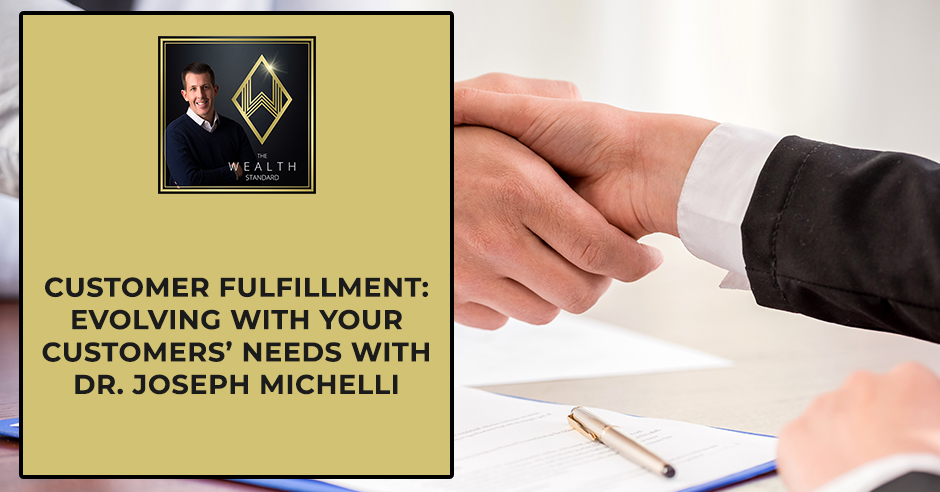
Customer experience is vital to the long-term success of any brand, organization, or enterprise. Today, Patrick Donohoe interviews Dr. Joseph Michelli, an internationally sought-after speaker, organizational consultant, and author of numerous national and bestsellers, including Airbnb: A Five Leadership Lessons for Igniting Growth, Loyalty, Community, and Belonging. Dr. Michelli talks about the importance of evolving with your customers’ needs and expectations from your brand, and shares some tips on how you can deliver optimal value to them. Get further educated about marketing and customer fulfilment on today’s episode.
—
Watch the episode here:
Listen to the podcast here:
Customer Fulfillment: Evolving With Your Customers’ Needs With Dr. Joseph Michelli
It’s our season on entrepreneurship and we’re almost done. This is one of the final guests and it was a great interview. This guy is so smart and so experienced more importantly. You guys are going to be entertained as well as informed on some of the things. We haven’t necessarily got into this season which is below the surface of the customer, client experience and how vital that is to the long-term success of a brand, organization and enterprise. Dr. Joseph Michelli is an internationally sought-after speaker and organizational consultant. Dr. Michelli is the author of numerous national and bestsellers including The Starbucks Experience: 5 Principles for Turning Ordinary into Extraordinary and The New Gold Standard: 5 Leadership Principles For Creating A Legendary Customer Experience Courtesy of the Ritz-Carlton Hotel Company. His New York Times number one bestseller, Prescription For Excellence: Leadership Lessons for Creating a World-Class Customer Experience from UCLA Health System. He was named as one of the Top 10 Thought Leaders in Customer Service by Global Gurus. His new book, which is about a more recent company, The Airbnb Way: 5 Leadership Lessons for Igniting Growth Through Loyalty, Community, and Belonging.
Dr. Michelli, it was a pleasure getting into the necessary variable to success which is the customer. It’s not just what they want, need, desire, dream of now. It is how to keep tabs and keep a pulse on that and be obsessed with figuring out ways to continually do that. It’s going to be a necessity in order to sustain a healthy brand and a healthy company. As a final reminder, if you are interested in the invite I gave in regards to the Unleash the Power Within, the Tony Robbins Experience, it’s going to be in March in San Jose, California. I’m going to be there and some members of my team are going to be there as well, and we would love for you to join us. It’s an incredible experience. This would be maybe six times. I can’t remember, going to this specific event. It is life-changing and you will have a blast. It is well worth the investment and well worth the time you spend on it. We got a pretty steep discount on the tickets based on my relationship with the organization. I hope you can join us. Let’s get to my interview with Dr. Joseph Michelli.
—
Joseph, it’s awesome to have you on. Thank you for taking the time. I know it’s a busy time of year, but I’m excited about the conversation we’re going to have because you’re an expert in a field, I believe, is one of those variables that’s often overlooked and ultimately leads to catastrophe in the business world. First off, welcome and thanks for joining us.
Are you kidding me? Given the kinds of folks you’ve had, I’m honored to be here.
You’ve done so much work and continue to do it. As entrepreneurs, as business owners, you come up with an idea, but oftentimes the way in which you view the world is your way. It may not be other people’s way. Sometimes that gets in the way from understanding who’s going to buy your stuff. Marketing is a big piece of it, customer fulfillment is another piece of it. You specialize in this area and written a number of books on it. The customer always comes number one. Is there an argument to the contrary of that?
No, Peter Drucker said it best. He said that we’re not in business to create a profit. We’re in business to create a customer and it’s through all the customers that profits come. A successful business has to define value and create value and then it has to market to the people who find value in it. Once those people show up, you have to deliver the value you marketed against. You have to constantly refine the delivery of that value based on the needs set of your consumers. That’s the space I live in. Thank God, I don’t have to deal with the other elements of business like making enough money to stay in business. Those factors are some financier types, but I’m truly trying to help brands figure out what it takes to deliver the value for the customers that are optimal for them.
A successful business has to define and create value. Share on XTalk about the changing of customers. One of the examples we talked about briefly was in Blockbuster. Blockbuster fulfilled the need. The customer wanted more and they wanted the same need, but less friction and less hassle. Let me talk about you meet a need, but then it’s the necessity of constantly being in tune with your customers so that they don’t leave you.
I am so grateful to Blockbuster when my kids were little. Certainly, we spent our Friday afternoon traipsing around the stacks of videos, normally not being able to find the ones we wanted most and defaulting to others. We were among that set of people who ultimately paid more for the videos and late fees than it would have cost us and we bought them new. There was such a wonderful distribution on your corner, access to entertainment. Delivery systems changed and Blockbuster did not. They also made what I would call bad profit. They made a lot of profit on those late fees and that kind of profit alienated the consumer over time and Blockbuster wasn’t ready to pivot. They weren’t ready to buy Netflix when Netflix came begging to be purchased by them at one point in their evolution. Netflix faces the competition of Disney+ and all the others. They got ahead of the power curve in terms of what consumers wanted in downloadable delivery.
I would say that they benefited from the whole monopoly idea. There wasn’t much competition out there. They kept frustrating people. The late fees, changing these, they went out of their way to make a profit right at the expense of the frustrated customer. It was like when a new, more viable option, like Redbox and all these other things start to appear, they were ready to go. Blockbuster was capitalizing on a monopoly that they had formed over the years.
If you think about Netflix as the entrant that challenged them most, Netflix had to rely on the United States Postal Service as their delivery system. It was fraught with its own sets of problems and over time they were able to make the pivot to streaming and here we are now. Sometimes we can trap a customer relationship with us. That doesn’t necessarily mean that when an option becomes available, they’re going to do anything more than flee with abandon.
It seems that the evolution, it’s like you look at Maslow’s hierarchy of needs and we’ve gone as a society from over the last 100 years being afraid to die during a hard winter. Living in such an amazingly abundant world. I would say as far as a business need is concerned, they should insert in the customer experience because people didn’t look for experience 100 years ago. It was all like, “I don’t have enough food storage.” Wood cuts so I don’t freeze during the winter. Right now, there’s so much entertainment that people have been conditioned for an experience. There have been brands that have capitalized on that understanding whether they did that intentionally or not. Would you speak to that as the importance of the experience and having a customer feel important based on the way you treat them or your business treats them?
I was sitting across from Howard Schultz, the Founder legend behind Starbucks. Howard once turned to me and said, “Joseph, we are not in the coffee business.” It shocks me. He said, “We’re in the people business serving coffee.” If you get down to it, people may need a warm cup of caffeine at some fundamental level to get jump-started in the morning, but they need a sense of community. They need a sense of belonging. It’s the things that are up higher in that Maslow pyramid that you talk about. Basic safety, security needs, those are table stakes for most of us nowadays. We’re wanting to get that if that’s what we’re seeking out. We want to get that plus, we want to get the social benefits of feeling like we belong to the tribe of the company that is delivering that for us.
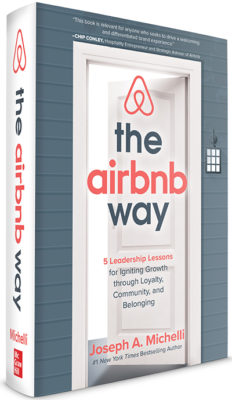
The Airbnb Way
We did a new book about Airbnb and I would say housing and accommodations which are very primary. Give me a safe shelter. It’s on the very bottom of the Maslow pyramid. You can do that and also create a space where people feel like, “Welcome. You belong in my physical place.” That’s what great brands are doing whether they’re entrepreneurial brands or they’re established brands. They are constantly looking for what are the higher-level emotional belonging, self-actualization, personal success, identity needs of a consumer. Can we address in the context of our deliverable?
You hit something that I hadn’t thought of before. The lower levels of the hierarchy of needs is expected. It’s self-esteem and self-actualization. Self-esteem is people want to feel, they want to experience. That’s what they’re looking for personally. They have also connected to all of the efforts to do these socially, environmentally conscious. There are socially conscious investment funds. You have the tax credits. It’s incredible, the direction people are going as far as giving back and get into that self-actualization phase, which is all about contribution. This becoming part of a lot of businesses that I’ve seen. I haven’t connected that before where when you see that a business is out to do good, you’re more attracted to them than the business. It’s out to turn a profit. It’s interesting.
That business doing good is an expression of my ability to do good in the world. Often brands are little more than extensions of our own identity. Am I a Starbucks or am I a Dunkin Donuts? Am I a Ford or am I a Ferrari? These things are ingrained in the way we see ourselves. My dad was a Ford guy and I worked for Mercedes Benz. I must tell you, I ultimately bought a Mercedes partly out of my business relationship with them. I remember sitting in that dealership going, “Would my dad be okay with me buying this car?” In many ways, if Mercedes doesn’t connect with my sense of self-expression and identity and the Ford does, then I can have some buyer’s remorse off for that purchase.
I bought another car. It was a BMW. I never bought a BMW before. I had to pre-order it and put a little deposit down and timelines were messed up and there were few things they didn’t do. I got a handwritten letter and a check from the CEO and another executive refunding my deposit. I’m like, “I can’t believe this.” What it did internally, I had those feelings of, “I’m not going to deal with GMC for my wife’s car. Screw them. This is where I’m going.” They made you feel important. They made you feel valuable. They cared about your experience with them. They knew that part of their business model was repeat business and they understood how it all played into things.
You’re an important guy. The CEO wrote to you. Let’s go one step further. Look how smart you are because you’re purchasing from a brand that behaves like this. You are good and wonderful. I say that to you in the sense of the brand’s effort to communicate to the consumer that you are smart. You chose us. There are a lot of brands that don’t get it and it is all about the product. It’s all about the exchange of cash for the service. There’s very little understanding that beneath every purchase intent is an emotional driver, is a psychological driver. People will justify purchases in their frontal cortex. They’ll say calculating the benefits and the deficits. I’ve concluded that this is the wisest, most prudent decision. In point of fact, that’s the language we use to make it okay to be a pretty emotional being that says, “That’s cool what they did. I’m even more in for the next BMW.”
Would you speak to the resilience of good brands? I look at big failures with customer loyalty. Wells Fargo for example. Did they screw up? They’re still alive. They’re trying to rebrand. I’m not sure, I haven’t studied them. Maybe you have. What I’ve discovered is you could try certain things and do this and do this and still retain brand of our customer loyalty because there’s a resilience factor there. Sometimes people won’t innovate for fear of poking the bear, having the customer go elsewhere. What are your thoughts around that? I can see there’s this constant evolution of what customers are expecting from a brand. If you’re not on top of that, you may be good now, but a couple of years from now, you’re gone.
Brands are often little more than extensions of your own identity. Share on XI’ve studied Wells Fargo because one of my clients is a major bank that is merging with another major bank. I’ve been in the space for a long time. I can tell you that generally banks partly benefit in a Blockbuster sense by getting you in multiple products and making it complicated for you to disrupt your life to leave them. There were definitely people who did in the aftermath of Wells Fargo, a very big breach of trust for a lot of consumers. You saw people move out, but not as much as if there had been a single product industry where I could pull and run. The price of transition in banking is a bit of a challenge that some banks have taken advantage of that. Innovative banks that deliver up enlightened experience.
You’re seeing some of these capital one cafes and some other things going out in the space where people are innovating and attracting a whole group of people who are saying, “I’m tired of that other crap. I don’t have to go to a bank anymore physically. All of the grandiosity of banking isn’t for me. Give me great technology, make it easy for me to do my banking with you, educate me on financial literacy.” Those are the things that seem to be resonating now. I would say one of my favorite lines and I feel like I’m quoting Howard Schultz left and right here. Howard often would talk about making deposits in the reservoir of trust. What he would say is let’s do a lot of good things socially because invariably things are going to fall apart, particularly in human service delivery.
People let other human beings down. In the context of describing Starbucks, he would often say, “One of our greatest disadvantages is we’re not Coca-Cola. Our product doesn’t sit on a shelf where people can’t screw it up.” He would turn around and say, “One of the greatest advantages we have is our product doesn’t sit on the shelf and we can elevate the product through humans.” Given that humans will let others down, we need to make lots of social positive deposits. When in Philadelphia, a barista does not allow people of color to use the bathrooms without a purchase. We can withstand the wrath and the aftermath because our track record going in was one that was fairly socially conscious. I would say to you that’s a complex question, but if you try to fix it after all of the horses run out of the Wells Fargo stable without a lot of investments, you’ll find yourself in a world that hurt.
Let’s maybe step back a couple of steps. When you have this entrepreneurial spirit in a lot of people when they come up with ideas and they’re connecting to see whether those ideas are relevant to other people and build a business out of it. What are the steps to take to understand that you’ve seen successful across enterprises?
There’s a lot of data that you can inquire about customers. Pay attention to the data of what people are doing. I also think you have to warm up all that big data with some voice of customer listening. If you’re launching a business, talk to the people who you think are optimal customers of your business. Don’t assume you understand them because you’re like them. You may be like them in a lot of ways, but you’ll find out frequently that customers who are willing to pay for your services, are going to want some things that you haven’t even contemplated. Talk, listen, ask a million questions and then observe their behavior with whatever data analysis you can. Do they touch the items when they come into your retail store? What items do they touch? Do you need to put more of those touchable, tactile experiences for them? When you ask them about what are the products? If you asked them after they’ve been in your store, what do they remember about when they were in your store? The things they remember, you want to put more of those types of things in your store. For example, we were in to say, “What stood out based on what was talked about now?” Based on whatever I would hear from your readers, I would be thinking about adding more of that in future guesting appearances. The key is to give this blank canvas. Don’t assume that anything that you’re thinking about doing is going to resonate. See what resonated and do more of that.
It’s a fascinating approach and I look at the signs out there whether it’s the use of focus groups or beta testing. I’m starting to remember the conversations I’ve had. It’s one of those constant testing and constant improvement of doing, even more knowing what needs are. That’s a comment you made that I remember from the Wells Fargo example. It’s resilience. It’s for multiple products and there are multiple financial products out there. The more you have, the more resilient a customer could be. If you come up with a crappy one and they have already multiple then you could get rid of that one and do another one without losing the customer. It’s interesting because oftentimes you have one-trick ponies, one service, and one product. Do you consider that dangerous as far as company health is concerned?

Customer Fulfillment: When launching a business, talk to the people who you think are optimal customers.
It depends. For example, if you make a good hamburger, a good French fries and a great milkshake, it’s a very solid business play. Should you explore adjacencies that seem reasonable? Most brands do and they do well from it. There are the five guys of the world who will do very well sustaining a focus, not getting too broad and not having lots of limited-time offers. Executing well and knowing that your customer wants that and it’s a frequent enough need state for consumers, you can do well with the one single product. There are those brands that find those sweet little adjacencies that customers also want and that’s the perfect mix.
I remember feeling curious about the success of GoPro. Going public with one product, maybe they look a few different versions. It’s interesting because they’d been successful. I haven’t checked their financials. I’ve always been curious as to different products and multiple products and is there a happy medium? I would assume that these enterprise companies, and maybe you can correct me if I’m wrong, but they have ways in which they’re in tune with their customer, getting feedback, using data, creating profiles, creating avatars and understanding what words they use, the messaging that most resonates and test.
That’s my world. That is what I do. That’s exactly what I do with my full-time gig. I write books about a lot of that. We’ll take an optimal customer. We’ll put them into a persona. We might create an avatar around them. We’re going to anticipate the entire journey that they’re going to have with the brand, all of their various use cases, how they integrate with all the contact points with the brand. After we’ve anticipated that, we’re going to go and talk to them and we’re going to say, “What is it that happens? Sometimes we talk to them in focus groups. Sometimes we do ethnographic studies that essentially says, “A day in the life of or keep a journal of use of our product.” As you’re opening the box, what are you thinking, feeling, doing, saying to yourself? All of these things are designed for us to get insights into what would increase the connectivity, the stickiness, the likelihood to recommend this product or brand to others. We track all the metrics to support those things and design to optimize for those folks.
I have two concluding questions. The first is with nonprofits where you have a more mission-driven than customer-driven. How to do successful nonprofits? How do they sustain and maintain their growth by connecting? That’s the first question I have.
We’ve worked with a lot of nonprofits and they have customers. The people who support those nonprofits have to be connected to the mission as well. It’s being able to inspire people to help you achieve the mission. There’s no mission without money. In any nonprofit, you have to be able to generate enough revenue to achieve the mission. It’s getting people to buy the vision alongside you. It’s helping them tell stories about their journey in support of that with you in the mission. If you could think of some of the wounded warrior projects and others, they have storytellers who are telling the story of the impact of the organization’s mission. That story is part of engaging their customers, those who support these nonprofits. While it may not be formally the same, there is still a need to generate engagement of those who support the cause on behalf of the impact the cause creates.
That’s amazing storytelling, especially if you’re telling a story that a person can sympathize or empathize with. When you go without a story, it’s hard to connect. I look at it a lot. There have been a million books written on storytelling, but it’s one of those things that it’s a constant. We’re connected to that as human beings. It’s fascinating because I would say it’s relevant to a poor profit brand. The public company, private company, it’s being able to connect the story. Human beings like being with human beings. It gives them a sense of meaning. It’s people that are like them that they want to be with.
Don't assume that anything that you're thinking about doing is going to resonate. Share on XWe bought a lot of technology to make our lives easier. We want you to think through the experience with lots of convenience and friction reduction through technology. We want to be inspired by human beings. The 21st-century company is a technology-enabled human-powered organization. Part of human power is service delivery, human storytelling, the impact of your brand on other humans.
Final one, what trends are you paying attention to? What are you seeing as far as customer behavior and how it’s changing? Do you see the same thing with maybe a little bit different angle?
There is Martec’s Law, which says you better track what customers do in behavior exponentially because most organizations are only improving incrementally. The gap between what customers are doing exponentially behaviorally and what brands are doing is the disruption gap. It’s the gap that Airbnb shot. For the most part, consumers are wanting everything mobile, so everything’s got to be mobile and you’ve got to be able to deliver your sales service, experience mobile. You should be able to give them a multitude of channels. Rather than forcing them to have human contact at every turn, they should have the option of an all-digital journey. You said also give them options like this, a virtual experience where we are human, human to human, aided by technology, but we’re not sitting in the same room. I know that’s a total demystification of the magic of your show.
You don’t have to have two people in the same physical place to allow them to have human interaction. It’s thinking through that reality that people want to engage with brands wherever they want, whenever they want using the technology available and to have people ready and able to help them in the event, the self-serve technology isn’t sufficient for their given needs. That’s one. The other quick one that we see is a lack of desire to own things and more and more willingness to rent and share the marketplace. It’s no longer the prom dress has to be newly purchased. If you purchase one, why can’t we rent that out to other people in need? Conspicuous consumption is being changed to stewardship, environmental consciousness, and those things. Brands need to be paying attention to those trends in particular.
I know you talk a lot about touchpoints and knowing what type of experience to have at different touchpoints. There is a conversation I had about somebody that’s trying to invent the smell. You have a memory like you take a picture or a video but the things that are missing. You can have sound but the smell and somebody is working on how to replicate a smell anyway.
Martin Lindstrom is a great guest to have someday. He specializes in multisensory marketing and he’s a big fan of the smell and drives profits associated with it. He’s a great person to include in that conversation, an important touchpoint.

Customer Fulfillment: There’s no mission without money. Nonprofits need to generate enough revenue to achieve the mission.
Joseph, this has been awesome. It’s one of those interviews I was excited about because the customer is sometimes elusive if you don’t know what to look for and if you don’t have a good strategy to understand them.
You’re reflective of a lot of trends for people and a lot of awareness of the customer. You’ve thought through what people want to hear and who they want to hear from. You give them access to things that they would not otherwise be able to get access to themselves. It is no easy feat to get someone like Michael Gerber on a show. Those are trends that people want. They want exclusivity, they want access, they want somebody to curate information. If all of the information out there is curated, you give me impactful knowledge. It’s an honor to have been part of that and to spend time with you.
It’s an honor to have you. I know you’ve worked with some successful brands. It’s inspiring to know that human beings continue to and in a weird way care about each other and do that through commerce, through service and try to figure out better ways to improve or magnify the human experience. It’s always cool to realize what’s going on from that perspective.
I commit myself to serving brands that are committed to serving well. I don’t work with those leaders who say, “We want it to be the year of the customer this year,” as an add-on. People have an authentic commitment to elevating the life and the experience of their consumers and in the process benefit themselves and all the other stakeholders. That’s the company for me. I’ve been honored to get to work with those brands. There are a lot of them out there. You read the news and you think what’s gone wrong with business and trust in the world around us. I’ll tell you, I work with some remarkable leaders who are genuinely concerned about making the life of the people they serve better.
Joseph, thank you again. It’s been awesome. We’ll definitely have you back.
Thanks. We’ll do a book in a couple of years on Godiva chocolate. Maybe we can score you some chocolate as part of that deal.
I have to share it with my wife.
Hopefully, she’ll leave some for you. That’s what I was thinking. Thanks a lot.
Take care.
Important Links:
- The Starbucks Experience: 5 Principles for Turning Ordinary into Extraordinary
- The New Gold Standard: 5 Leadership Principles For Creating A Legendary Customer Experience Courtesy of the Ritz-Carlton Hotel Company
- Prescription For Excellence: Leadership Lessons for Creating a World-Class Customer Experience from UCLA Health System
- The Airbnb Way: 5 Leadership Lessons for Igniting Growth Through Loyalty, Community, and Belonging
- Joseph Michelli
- Unleash the Power Within
- https://www.TonyRobbins.com/events/unleash-the-power-within/san-jose/
- www.AirbnbWay.com
- www.JosephMichelli.com
- https://www.LinkedIn.com/in/josephmichelli/
- https://Twitter.com/josephmichelli
- https://www.Instagram.com/josephmichelli/
- https://www.Facebook.com/themichelliexperience
About Dr. Joseph Michelli
 Joseph A. Michelli, Ph.D., C.S.P., is an internationally sought-after speaker, author, and organizational consultant who transfers his knowledge of exceptional business practices in ways that develop joyful and productive workplaces with a focus on customer experience.
Joseph A. Michelli, Ph.D., C.S.P., is an internationally sought-after speaker, author, and organizational consultant who transfers his knowledge of exceptional business practices in ways that develop joyful and productive workplaces with a focus on customer experience.
His insights encourage leaders and frontline workers to grow and invest passionately in all aspects of their lives.
Love the show? Subscribe, rate, review, and share!

